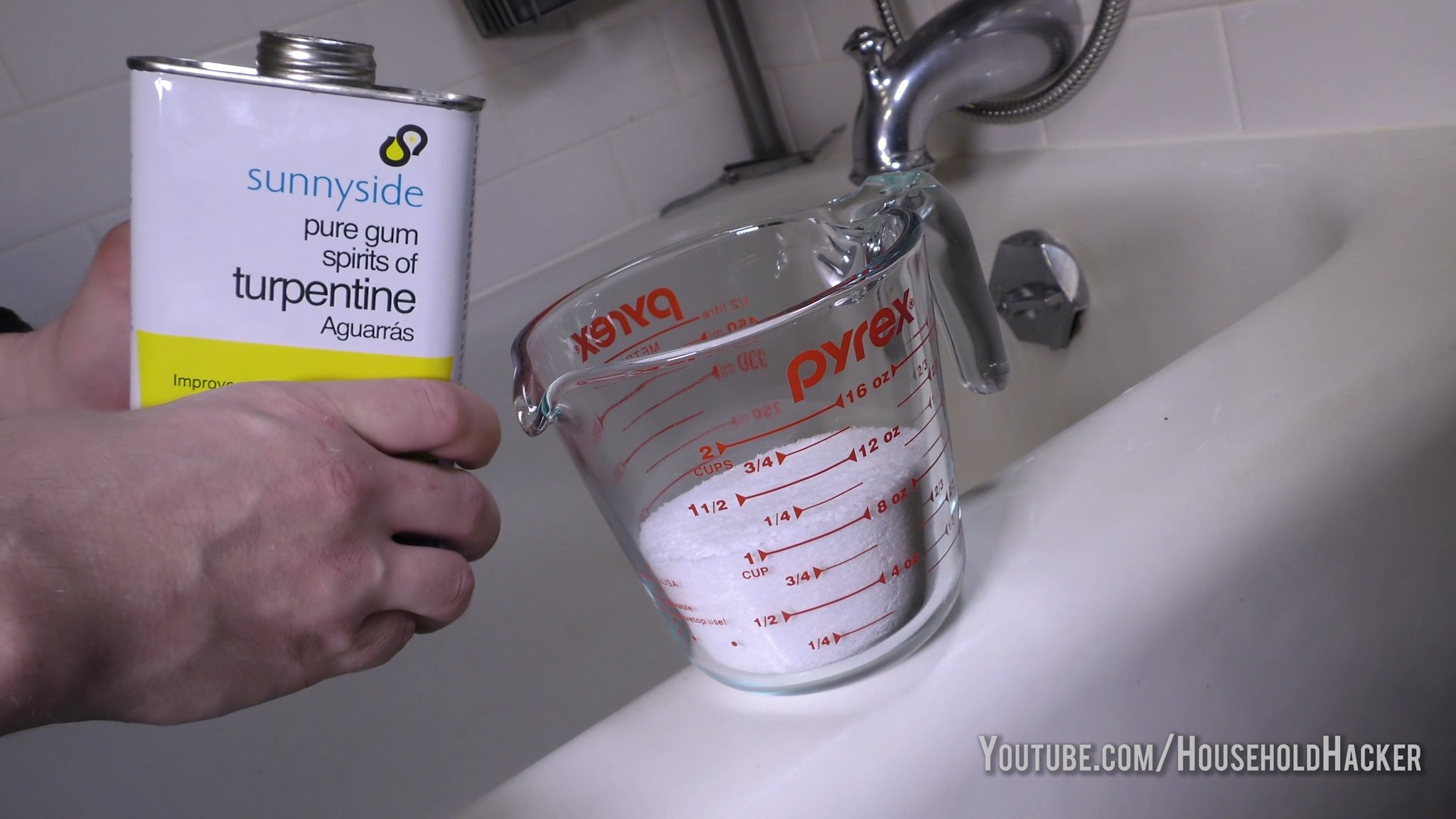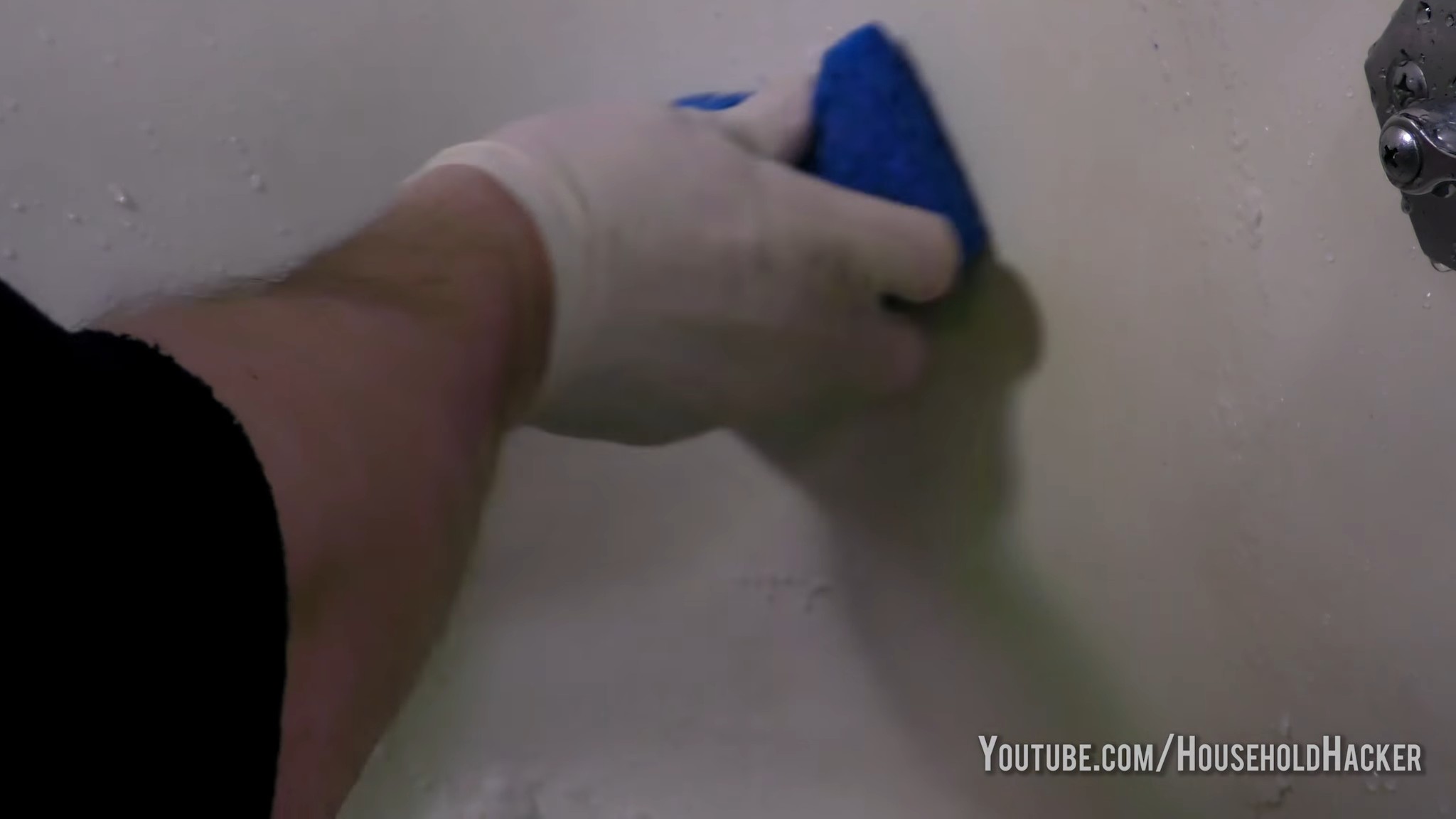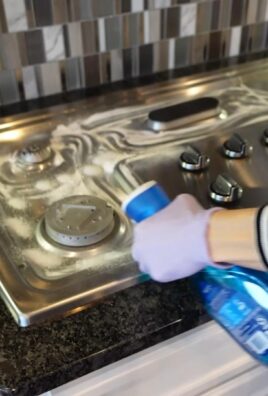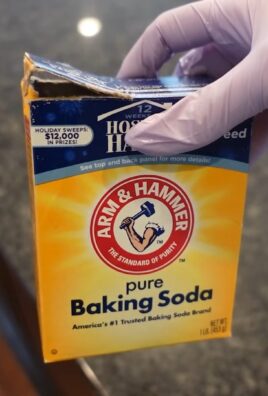Salt home hacks – who knew such a simple, everyday ingredient could be a secret weapon for a thriving garden? I’m always on the lookout for clever, cost-effective ways to boost my plants, and let me tell you, salt has been a game-changer! For centuries, cultures around the world have understood the power of natural remedies, often passed down through generations. While its direct use in gardening might not be as ancient as some other practices, the understanding of minerals and their impact on the earth certainly is.
Are you tired of battling weeds, struggling with nutrient deficiencies, or watching your precious plants fall victim to pests? You’re not alone! That’s why I’m so excited to share these amazing salt home hacks with you. We’ll explore how different types of salt can be used to tackle common gardening problems, from improving soil structure to deterring unwanted critters. These DIY tricks are not only budget-friendly but also offer a more natural alternative to harsh chemicals. Get ready to unlock the hidden potential of salt and transform your garden into a flourishing oasis!

Unlocking the Magic of Salt: DIY Home Hacks You Need to Know
Hey there, fellow DIY enthusiasts! Get ready to be amazed because today, we’re diving deep into the wonderful world of salt and uncovering some seriously cool home hacks. Forget just seasoning your food; salt is a powerhouse ingredient that can clean, deodorize, and even beautify your home. I’m so excited to share these tips with you – let’s get started!
Cleaning Powerhouse: Salt’s Amazing Abilities
Salt’s abrasive texture and chemical properties make it a fantastic natural cleaner. It’s also readily available and super affordable, which is a win-win in my book!
* Rust Removal: Salt can help break down rust and make it easier to scrub away.
* Stain Remover: From coffee spills to wine mishaps, salt can be your stain-fighting friend.
* Odor Neutralizer: Say goodbye to lingering smells with the help of salt’s absorbent qualities.
* Scouring Agent: Its gentle abrasiveness makes it perfect for cleaning tough grime without harsh chemicals.
Hack 1: Reviving Your Cast Iron Skillet
Cast iron skillets are kitchen staples, but they require special care. Salt is a fantastic way to clean them without damaging the seasoning.
Materials You’ll Need:
* Coarse salt (kosher or sea salt works best)
* Paper towels or a clean cloth
* Vegetable oil or cooking oil
Step-by-Step Instructions:
1. Scrape Away Excess Food: After cooking, use a spatula or scraper to remove any large food particles from your skillet.
2. Add Salt: Pour a generous amount of coarse salt into the skillet. The amount will depend on the size of your skillet, but you want a layer that covers the bottom.
3. Scrub Gently: Using a paper towel or a clean cloth, scrub the skillet with the salt in a circular motion. Apply gentle pressure to dislodge any stuck-on food. The salt acts as a mild abrasive, cleaning without stripping the seasoning.
4. Rinse (Optional): If necessary, you can rinse the skillet with hot water. However, avoid soaking it or using soap, as this can damage the seasoning.
5. Dry Thoroughly: Immediately dry the skillet completely with a clean towel.
6. Season Lightly: Place the skillet on the stovetop over low heat. Add a teaspoon of vegetable oil or cooking oil and rub it into the entire surface of the skillet, including the sides.
7. Heat and Cool: Continue heating the skillet for a few minutes until it starts to smoke slightly. Then, remove it from the heat and let it cool completely. This helps the oil penetrate the pores of the cast iron, maintaining the seasoning.
Hack 2: Cleaning Your Sink and Drains
Salt can help unclog drains and freshen up your sink. It’s a simple and natural alternative to harsh chemical drain cleaners.
Materials You’ll Need:
* 1/2 cup salt
* Boiling water
Step-by-Step Instructions:
1. Pour Salt Down the Drain: Carefully pour 1/2 cup of salt down the drain you want to clean.
2. Flush with Boiling Water: Immediately follow the salt with a pot of boiling water. The hot water helps dissolve the salt and flush away any debris.
3. Let it Sit: Allow the mixture to sit in the drain for at least 30 minutes, or even overnight for tougher clogs.
4. Flush Again: After the waiting period, flush the drain with hot tap water for several minutes to ensure everything is cleared.
5. Repeat if Necessary: If the drain is still clogged, repeat the process. For stubborn clogs, you can also try adding 1/2 cup of baking soda along with the salt before flushing with boiling water.
Hack 3: Polishing Copper and Brass
Bring back the shine to your copper and brass items with a simple salt paste.
Materials You’ll Need:
* Salt
* White vinegar or lemon juice
* Flour (optional, for a thicker paste)
* Soft cloth
Step-by-Step Instructions:
1. Make a Paste: In a small bowl, mix salt with either white vinegar or lemon juice to form a paste. If you want a thicker paste, add a small amount of flour.
2. Apply the Paste: Apply the paste to the copper or brass item you want to polish.
3. Rub Gently: Using a soft cloth, gently rub the paste onto the surface in a circular motion. Focus on areas with tarnish or discoloration.
4. Rinse Thoroughly: Rinse the item thoroughly with warm water to remove all traces of the paste.
5. Dry Completely: Dry the item completely with a clean, soft cloth.
6. Buff to Shine: Buff the item with a dry cloth to bring out its shine.
Hack 4: Cleaning Your Iron
An iron with a dirty soleplate can leave marks on your clothes. Salt can help clean it quickly and easily.
Materials You’ll Need:
* Salt
* Clean cotton cloth or towel
* Iron
Step-by-Step Instructions:
1. Prepare the Surface: Spread a clean cotton cloth or towel on your ironing board or a heat-resistant surface.
2. Sprinkle Salt: Sprinkle a generous layer of salt onto the cloth.
3. Heat the Iron: Turn on your iron to a dry setting (no steam) and set it to a medium heat.
4. Iron the Salt: Gently iron over the salt-covered cloth in a circular motion. The salt will help loosen and remove any residue from the soleplate.
5. Wipe Clean: Once you’ve ironed over the entire surface, unplug the iron and let it cool slightly. Then, wipe the soleplate with a clean, damp cloth to remove any remaining salt and residue.
6. Test on Scrap Fabric: Before ironing your clothes, test the iron on a scrap piece of fabric to ensure there are no remaining salt particles.
Hack 5: Keeping Ants Away
Ants can be a real nuisance, especially in the kitchen. Salt can act as a natural deterrent.
Materials You’ll Need:
* Salt
* Water (optional)
Step-by-Step Instructions:
1. Identify Ant Entry Points: Observe where the ants are entering your home. Common entry points include cracks in walls, windowsills, and doorways.
2. Sprinkle Salt: Sprinkle a line of salt along the ant trails and entry points. The salt will disrupt their scent trails and deter them from entering.
3. Make a Salt Solution (Optional): For a more effective deterrent, you can mix salt with water to create a concentrated solution. Spray the solution along ant trails and entry points.
4. Reapply as Needed: Reapply the salt or salt solution as needed, especially after rain or cleaning.
Hack 6: Freshening Up Sponges
Sponges can quickly become breeding grounds for bacteria and odors. Salt can help disinfect and deodorize them.
Materials You’ll Need:
* 1/4 cup salt
* 1 cup warm water
* Dirty sponges
Step-by-Step Instructions:
1. Prepare the Salt Solution: In a bowl, dissolve 1/4 cup of salt in 1 cup of warm water.
2. Soak the Sponges: Submerge the dirty sponges in the salt solution.
3. Let it Soak: Allow the sponges to soak in the solution for at least overnight.
4. Rinse and Squeeze: The next day, rinse the sponges thoroughly with clean water and squeeze out any excess water.
5. Air Dry: Allow the sponges to air dry completely.
Hack 7: Cleaning Burnt Food from Pots and Pans
Burnt food can be a nightmare to clean. Salt can help loosen the burnt residue and make scrubbing easier.
Materials You’ll Need:
* Salt
* Water
* Scrubbing sponge or pad
Step-by-Step Instructions:
1. Cover the Burnt Area: Cover the burnt food in the pot or pan with a generous layer of salt.
2. Add Water: Add enough water to cover the burnt area.
3. Let it Soak: Let the mixture soak for several hours, or even overnight for heavily burnt food.
4. Scrub Away: After soaking, use a scrubbing sponge or pad to scrub away the loosened burnt residue. The salt will act as a mild abrasive, helping to lift the burnt food.
5. Wash as Usual: Wash the pot or pan as usual with soap and water.
Hack 8

Conclusion
So, there you have it! Transforming your home with these simple salt home hacks is not just a cost-effective alternative to expensive cleaning products; it’s a revelation in simplicity and effectiveness. We’ve explored how humble salt, a staple in every kitchen, can become your secret weapon against grime, odors, and even pesky pests. From revitalizing your cast iron skillet to banishing stubborn stains, the versatility of salt is truly remarkable.
But why is this a must-try? Because it’s more than just a cleaning trick; it’s about embracing a more sustainable and natural approach to home care. You’re reducing your reliance on harsh chemicals, minimizing your environmental impact, and saving money all at the same time. Plus, there’s a certain satisfaction in knowing you’re using a time-tested, natural solution that has been passed down through generations.
Beyond the Basics: Salt Home Hack Variations
Don’t be afraid to experiment and adapt these salt home hacks to your specific needs. Here are a few variations to get you started:
* **Scented Salt Scrub:** Add a few drops of your favorite essential oil (lavender, lemon, or eucalyptus work particularly well) to your salt scrub for an aromatherapy boost while cleaning.
* **Salt and Vinegar Power Cleaner:** Combine equal parts salt and white vinegar to create a potent paste for tackling tough stains on grout or porcelain. Be sure to test in an inconspicuous area first.
* **Salt and Baking Soda Deodorizer:** Mix equal parts salt and baking soda and sprinkle it in your shoes or carpets to absorb odors. Let it sit for a few hours, then vacuum.
* **Salt and Lemon Furniture Polish:** Mix salt with lemon juice to create a paste. Use a soft cloth to gently rub the paste onto wooden furniture to remove water rings and restore shine.
A Call to Action: Share Your Salt Success Stories!
We’re confident that once you try these salt home hacks, you’ll be amazed by the results. But don’t just take our word for it! We encourage you to put these tips to the test and share your experiences with us. Did you discover a new use for salt in your home? Did one of these hacks work particularly well for you? Let us know in the comments below! Your insights could help others discover the magic of salt and transform their homes too.
Embrace the power of salt and unlock a world of natural cleaning possibilities. You’ll be surprised at how much you can achieve with this simple, readily available ingredient. So, grab your salt shaker and get ready to experience the transformative power of these salt home hacks!
Frequently Asked Questions (FAQs)
Q: Is salt safe to use on all surfaces?
A: While salt is generally safe for most surfaces, it’s always a good idea to test it in an inconspicuous area first, especially on delicate or easily damaged materials. Avoid using coarse salt on polished surfaces, as it can scratch them. Opt for fine salt or dissolve the salt in water before applying it to sensitive surfaces. For example, when cleaning cast iron, coarse salt is fine, but for polishing silver, a finer salt mixed with a gentle abrasive like baking soda is preferable.
Q: What kind of salt is best for cleaning?
A: The type of salt you use depends on the specific task. Table salt, sea salt, and kosher salt can all be used for cleaning. Table salt is the most readily available and affordable option, making it a great all-purpose cleaner. Coarse salt, like kosher salt or sea salt, is ideal for scrubbing and removing stubborn stains. Epsom salt, while technically a mineral compound, can also be used for cleaning and deodorizing. Always consider the texture of the salt and the surface you’re cleaning to avoid scratches or damage.
Q: Can salt really remove stains? What kind of stains can it remove?
A: Yes, salt is surprisingly effective at removing various types of stains. Its abrasive properties help to lift stains from surfaces, while its absorbent qualities help to draw out liquids. Salt is particularly effective at removing:
* **Grease stains:** Sprinkle salt on fresh grease stains to absorb the grease before it sets.
* **Wine stains:** Pour salt generously over a fresh wine stain to absorb the liquid and prevent it from spreading.
* **Rust stains:** Create a paste of salt and lemon juice and apply it to rust stains. Let it sit for a few hours, then scrub and rinse.
* **Mold and mildew stains:** Mix salt with vinegar to create a paste and apply it to mold and mildew stains.
* **Blood stains:** Soak the stained fabric in cold salt water before washing.
Q: How does salt help with odors?
A: Salt is a natural deodorizer because it absorbs moisture, which is often the breeding ground for odor-causing bacteria. Sprinkling salt in shoes, carpets, or refrigerators can help to absorb moisture and neutralize odors. You can also create a salt solution to wash smelly items or surfaces. For example, placing a bowl of salt in the refrigerator can help to absorb unpleasant smells.
Q: Is it safe to use salt around pets and children?
A: Salt is generally considered safe for use around pets and children, but it’s important to exercise caution. Avoid leaving large quantities of salt within reach of children, as ingestion can cause dehydration. When using salt solutions for cleaning, ensure that pets and children are not exposed to the solution until the surface is dry. If you have any concerns, consult with your veterinarian or pediatrician.
Q: How can I use salt to clean my cast iron skillet?
A: Cleaning a cast iron skillet with salt is a simple and effective way to remove food residue without damaging the seasoning. After cooking, while the skillet is still warm, add a generous amount of coarse salt and scrub with a clean cloth or sponge. The salt will act as a gentle abrasive, removing food particles without stripping the seasoning. Rinse the skillet with warm water and dry it thoroughly. Then, lightly coat the skillet with oil and heat it on the stovetop for a few minutes to maintain the seasoning.
Q: Can I use salt to unclog drains?
A: Yes, salt can be used as a natural drain cleaner. Pour a cup of salt down the drain, followed by a cup of boiling water. Let it sit for a few hours, or preferably overnight, then flush with hot water. The salt will help to break down grease and grime, clearing minor clogs. For more stubborn clogs, you may need to repeat the process or use a stronger drain cleaner.
Q: How often should I use salt for cleaning?
A: The frequency of using salt for cleaning depends on the specific task and the level of dirt or grime. For daily cleaning tasks, such as wiping down countertops or scrubbing cast iron skillets, you can use salt as needed. For more intensive cleaning tasks, such as removing stubborn stains or unclogging drains, you may need to use salt less frequently. Always assess the surface you’re cleaning and adjust the frequency accordingly.
Q: What are the environmental benefits of using salt for cleaning?
A: Using salt for cleaning offers several environmental benefits. It reduces your reliance on harsh chemicals, which can pollute waterways and harm aquatic life. Salt is a natural and readily available resource, making it a more sustainable option than synthetic cleaning products. By using salt for cleaning, you’re contributing to a healthier environment and reducing your carbon footprint.




Leave a Comment